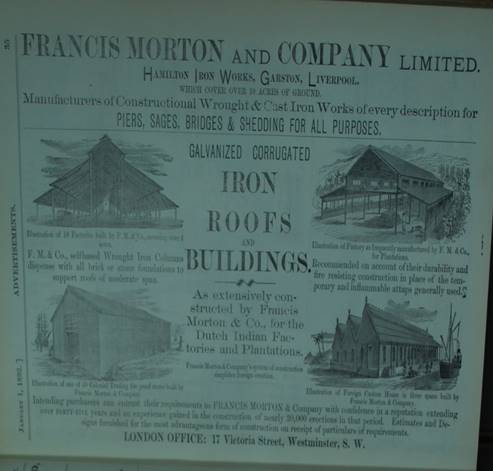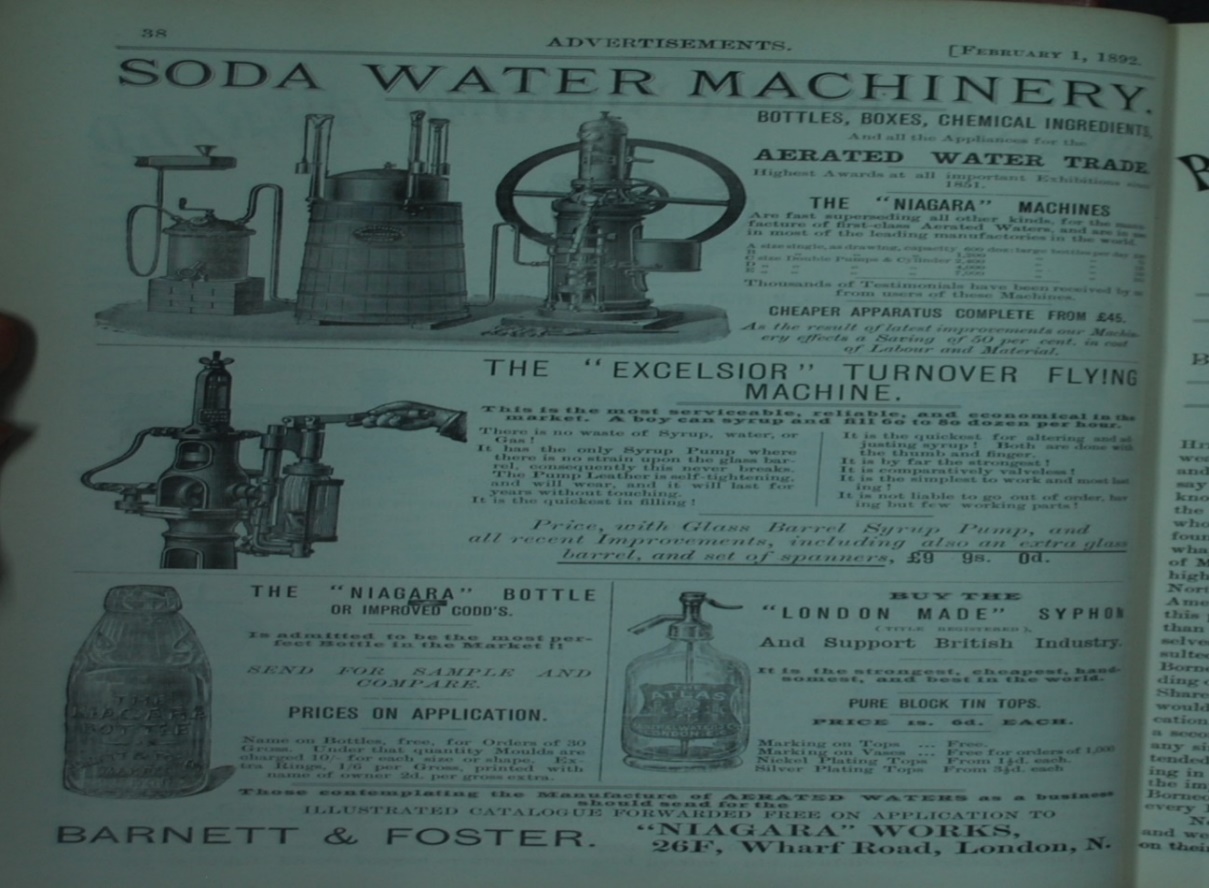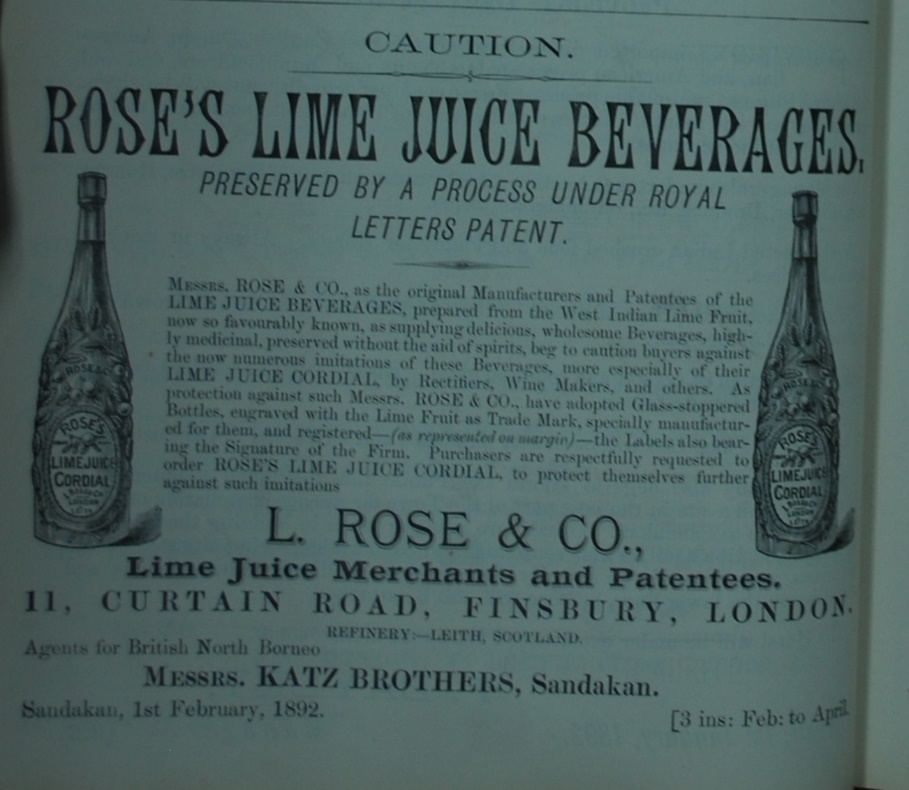Abstract
This paper discusses the conflicts of interest between commerce and colonialism in colonial newspaper advertisements. The era of colonialism has seen the transfer of British technology in printing through the distribution of newspapers in the colonised regions such as Tanah Melayu, Sabah, and Sarawak. Three advertisements from a selected newspaper are selected for the study to ascertain the connections between the ideologies of commerce and colonialism in the paper. The assumption in regards to the advertisements released in this era is that these advertisements represent a primary medium for the unequivocal propagation of Western values and colonial interests. To study these conflicts of interests, this paper focuses on the advertisements from
Keywords: CommercecolonialismadvertisementNorth Borneosemiotics
Introduction
The need for Western empires to expand their power and territory has led to colonisation activities in many regions of the world, Borneo included. European powers had attempted to build their colonies in Borneo (Tregonning, 1965) due to the immense supply of raw materials to fulfil the demands from mother countries. This is in line with the commercialist and capitalist ideologies which incline towards securing raw materials to maximise production and profit. According to McLeod (2000), colonialism very much involved with imperialism and capitalism. He argues:
The seizing of ‘foreign’ lands for government and settlement was in part motivated by the desire to create and control market abroad for Western goods, as well as securing the natural resources and labour-power of different lands and peoples at the lowest possible cost. Colonialism was a lucrative commercial operation, bringing wealth and riches to Western nations through the economic exploitation of others (p.7).
In other words, the Western Empires, such as Britain, colonised lands to obtain the natural resources from the lands and then used the resources for their own needs, expanding the power and wealth of the empires. Through commercialism, colonisation of other lands was justified and normalised. Colonisation was not seen as a negative process; rather it was perceived as a positive action to support the empires. The Western producers and consumers believed that colonialism was important to increase the profit which would eventually benefit the respective empires.
The British North Borneo (Chartered) Company (BNBC) governed North Borneo until 1946 and was granted the permission to “improve, develop, and cultivate any lands in the areas granted” as well as to gain profits and revenues through the trading of commodities, merchandise and natural resources from North Borneo (Kahin, 1947, p. 44). The governing of North Borneo, initially through BNBC and later directly through the British Government, started with gaining profits in mind, like many other colonised regions. This reflects the intention of the chartered company and the British Empire.
Problem Statement
Colonialism involved the building of settlements of colonisers in the colonised lands (McLeod, 2000, p.18). The desire to gain profits through trading and exploitation of resources and the existence of these settlements who served as consumers created the need for newspaper publishing to “[promote] consumption by creating consumer wants for products through advertising, and [serve] the financial interests of newspaper owners” (Picard, 2004, p.109). However, the promotion of products and services through advertising is complex as argued by Goddard (2002, p.8) that “advertising texts are seen as potentially involving complex notions of audience, where readers have to work hard to decode messages and understand different address relationships”. Therefore, it is important to address the complex relationship between the ideologies of commerce and colonialism which exists in the colonial advertisements. There has not been many research conducted on the study of colonial newspaper advertisements in North Borneo. Previous studies such as by Sabihah and Nordi (2011) and Mat Zin Mat Kib (2011) are more concerned with the history of newspapers in Sabah or North Borneo. They did not look at the semiotic aspects of the newspapers. Therefore, we aim to fill the gap by conducting a semiotic analysis on the colonial advertisements in
Research Question
Our main research question for this paper is:
How does the semiotic analysis of advertisements in
Purpose of the Study
Newspapers serve as a resource that is significant and distinctive for research such as “reader reception, cultural production and political agency in the colonial period” (Newell, 2011, p. 26). The
Research Methods
The analysis of this paper is conducted by using Halliday’s transitivity model (1994) and Kress and van Leeuwen’s (2006) idea of representation and interaction between the producer and the viewer. Halliday’s transitivity model (1994) analyses “the semantic structures of clauses and refers, broadly, to who does what to whom, and how” (Halliday, 1994; Simpson & Mayr, 2010, p. 65) especially pertaining to power relations. These relationships of interest between commerce and colonialism are also discussed in the light of Kress & van Leeuwen’s (2006, p. 114) idea of representation and interaction, which are between the producer and the viewer. This idea observes the relationship between
Findings
There are three colonial advertisements taken from the
The first advertisement (BNBHOG, 1892, p. 35) (see Figure
(Hamilton Iron Works, Garston, Liverpool) which cover(s) over 10 acres of ground
F. M. & Co., selfbased Wrought Iron Columns dispense with all brick or stone foundation to support roof of moderate span
Francis Morton & Company’s system of construction simplifies foreign erect

All three clauses involve with the material process; a transitivity process which describes the process of
The analysis of the material processes in the advertisement indicates that the subjects for the clauses are the company, the product of the company and the service provided by the company. To discuss the idea of commerce and colonialism in advertisements, the first clause was analysed in great detail. The first clause, which is “Hamilton Iron Works, Garston, Liverpool which cover(s) over 10 acres of ground” provides the information on the size of the company’s land. This connotes the idea that this company was a big company with large operation activities. The first clause, which has the company as the subject of the clause sets to attract the customers by highlighting the size of their operation, providing assurance of the service provided to the customers. Another important clause which needs to be discussed is the clause “Francis Morton & Company’s system of construction simplifies foreign erection” (see Figure
There is an aspect of modality found in the advertisement. Although modality is not the focus of the study, it is interesting to note the way the company used modality to provide assurance to potential customers. The clause which contains modality in the advertisement is: “Intending purchasers
The second advertisement, see Figure
The “Niagara” machines are superseding all other kinds, for the manufacture of first-class Aerated Waters
(The “Niagara” machines) are in use in most of the leading manufactories in the world.
Our Machinery effects a Saving of 50 per cent, in cost of Labour and Material
This is the most serviceable, reliable and economical in the market
There is no waste of Syrup, water, or Gas
It has the only Syrup Pump
There is no strain upon the glass barrel
This never breaks
The Pump Leather is self-tightening
It is the quickest in filling
It is the quickest for altering and adjusting syrup
It is by far the strongest
It is comparatively valveless
It is the simplest to work and most lasting
It is not liable to go out of order, having but few working parts
(You) buy the “London Made” syphon
(You) support British Industry
It is the strongest, cheapest, handsomest and best in the world

There are several transitivity processes involved in this advertisement and they are material process, relational process and existential process. The material process was explained in the discussion of the first advertisement above. The relational process describes about the “state of being, where things are stated to exist in relation to other things” (Simpson & Mayr, 2010, p. 67-68). There are two types of relational process:
Based on the analysis, relational processes are the most observed in the advertisement. This means that the company wanted to highlight more on the attributes of the product. The existential process is also evident in the advertisement, which is not evident in the other advertisements used in this paper. However, the clauses of the material process address the conflicts of interest between commerce and colonialism. The clause “Our Machinery effects a Saving of 50 per cent, in cost of Labour and Material” has the machinery as the agent of the material process. This indicates what the machine can do to reduce the labour and material cost; in commerce, it is important to have lower cost, higher production. Therefore, the company tried to appeal to the customers by promoting the ability of the product to reduce production cost. One of the clauses of the existential process which is “There is no waste of Syrup, water, or Gas” also promotes the same notion, which is reducing the cost of production.
There are another two important material clauses in discussing the conflicts of interest between commerce and colonialism, which are “(You) buy the “London Made” syphon” and “(You) support British Industry”. The agents are not specified in the original clauses because the clauses are imperative. However, we can assume the agents of the clauses are the potential customers. The important aspects of these material processes in the context of commerce and colonialism are the material verbs (
The third advertisement is an advertisement from L. Rose & Co., (see Figure
Messrs. ROSE & CO., [as the original Manufacturers and Patentees of the LIME JUICE BEVERAGES, prepared from the West Indian Lime Fruit, now so favourably known, as supplying delicious, wholesome Beverages, highly medicinal, preserved without the aid of spirits] beg to caution buyers against the now numerous imitations of these Beverages, more especially of their LIME JUICE CORDIAL, by Rectifiers, Wine Makers, and others
ROSE & CO., have adopted Glass-stoppered Bottles, engraved with the Lime Fruit as Trade Mark
(ROSE & CO.,) specially manufactured for them
(ROSE & CO.,) registered [– (
as represented on margin ) –] the Labels also bearing the Signature of the Firm

There is only one transitivity process taking place in this advertisement and that is the material process. The analysis of the material process of the clauses found in the advertisement is shown in the Table
This advertisement is quite unique in the sense that the mechanism used in advertising of the product is a warning. Customers were warned of the imitations of the product, but at the same time, the company introduced a new design of the bottles which were used to keep the juice. Potential customers are advised to look for the new designed bottles to avoid purchasing the imitated products. This strategy in promoting and advertising their products would potentially secure the product’s market through their brand trademark and safeguard the profit of the company.
The company also was very proactive in stopping the sale of the imitations of their product by addressing the companies that imitated them directly. This is observed in the first clause of the advertisement:
Messrs. ROSE & CO., [as the original Manufacturers and Patentees of the LIME JUICE BEVERAGES, prepared from the West Indian Lime Fruit, now so favourably known, as supplying delicious, wholesome Beverages, highly medicinal, preserved without the aid of spirits] beg to caution buyers against the now numerous imitations of these Beverages, more especially of their LIME JUICE CORDIAL, by Rectifiers, Wine Makers, and others.
Rose & CO., called out the companies that imitated their lime juice (Rectifiers, Wine Makers) by including these companies in the
There is one similarity which is evident in all the advertisements. The advertisements include the origin of the companies which are places in Britain such as Liverpool and London (refer to Appendix). The inclusion of these places provides an underlying message of supporting the British Empire. By knowing the origin of the company, the British who lived in the North Borneo under the flag of the Empire would purchase products and services from these companies with the idea that purchasing British goods would mean supporting their mother country. This eventually led to the normalisation of colonialism and exploitation of the indigenous people.
Kress and van Leeuwen (2006) discuss that the producer and the viewer of images or advertisements in this case, have no immediate or direct involvement as they are absent from each other (114). However, in British colonial advertisements, particularly the advertisements in
Conclusion
This paper discussed the conflicts of interests between commerce and colonialism by analysing colonial advertisements in
Acknowledgment
This research was funded by the Fundamental Research Grant Scheme (FRGS), “A Semiotic Study of Newspaper Advertising in Colonial East Malaysia: An Ideological Conflict of Commerce and Colonialism” (203/PHUMANITI/6711587).
References
- Barnett & Foster. (1892, February 1). Soda water machinery [Advertisement]. The British North Borneo herald and official gazette, 38.
- Francis Morton and Company Limited. (1892, January 1). Galvanized corrugated iron roofs and buildings [Advertisement]. The British North Borneo herald and official gazette, 35.
- Goddard, A. (2002). The language of advertising: Written texts (2nd Ed.). London, U.K.: Routledge.
- Halliday, M. A. (1994). An introduction of functional grammar (2nd ed.). London, U.K.: Arnold.
- Kahin, G. M. (1947). The state of North Borneo 1881-1946. The Far Eastern Quarterly, 7(1), 43–65.
- Kress, G., & van Leeuwen, T. (2006). Reading images: The grammar of visual design (2nd ed.). Oxon.
- L. Rose & Co. (1892, February 1). Rose's lime juice beverages [Advertisement]. The British North Borneo herald and official gazette, 70.
- Mat Zin Mat Kib. (2011). Fuad Stephens sebagai tokoh wartawan tahun 1960-an: Peranan dan sumbangan dalam pembinaan masyarakat dan negara Malaysia. In Akhbar dan tokoh persuratkhabaran Malaysia kurun ke-20 (pp. 139–152). Penang, Malaysia: Penerbit Universiti Sains Malaysia.
- McLeod, J. (2000). Beginning postcolonialism. Manchester, UK: Manchester University Press.
- Newell, S. (2011). Articulating empire: Newspaper readerships In colonial West Africa. New Formations, 73, 26–42.
- Picard, R. G. (2004). The economics of the daily newspaper industry. In A. Alexander, J. Owers, R. Carveth, C. A. Hollifield, & A. N. Greco (Eds.), Media economics: Theory and practice (3rd ed., pp. 109–125). Mahwah, New Jersey: Lawrence Erlbaum Associates.
- Sabihah O., & Nordi A. (2011). Pelopor persuratkhabaran Sarawak dan tokoh-tokoh sosiobudaya - persuratan Sabah. In Akhbar dan tokoh persuratkhabaran Malaysia kurun ke-20 (pp. 113–138). Penang, Malaysia: Penerbit Universiti Sains Malaysia.
- Simpson, P., & Mayr, A. (2010). Language and power: A resource book for students. Oxon: Routledge.
- Tregonning, K. G. (1965). A history of modern Sabah (North Borneo 1881-1963) (2nd. ed.). Kuala Lumpur, Malaysia: Universiti of Malaya Press.
Copyright information

This work is licensed under a Creative Commons Attribution-NonCommercial-NoDerivatives 4.0 International License.
About this article
Publication Date
23 September 2019
Article Doi
eBook ISBN
978-1-80296-067-9
Publisher
Future Academy
Volume
68
Print ISBN (optional)
-
Edition Number
1st Edition
Pages
1-806
Subjects
Sociolinguistics, linguistics, literary theory, political science, political theory
Cite this article as:
Aniswal, A. G., Pakri*, M. R., & Rahim, A. A. (2019). A Semiotic Study Of Colonial Newspapers In Sabah. In N. S. Mat Akhir, J. Sulong, M. A. Wan Harun, S. Muhammad, A. L. Wei Lin, N. F. Low Abdullah, & M. Pourya Asl (Eds.), Role(s) and Relevance of Humanities for Sustainable Development, vol 68. European Proceedings of Social and Behavioural Sciences (pp. 658-668). Future Academy. https://doi.org/10.15405/epsbs.2019.09.72
